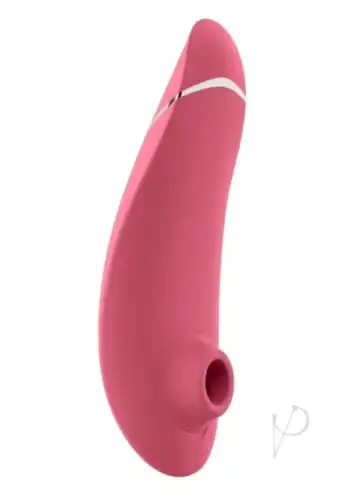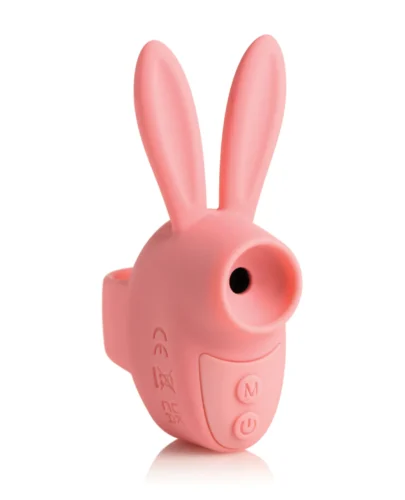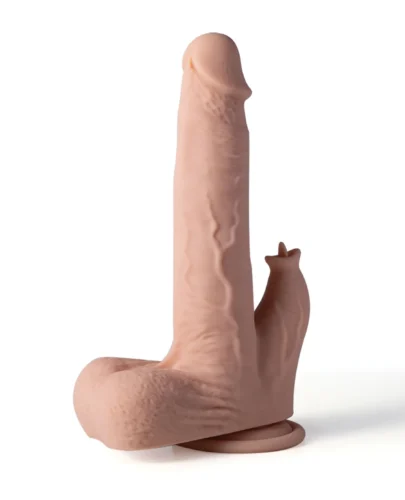
The Orgasm Gap: Why It Exists and How Couples Can Close It
Let’s be blunt: the orgasm gap refers to the difference in orgasm frequency between men and women, especially in heterosexual relationships. And yeah, it’s a thing—a stubborn, frustrating, and sometimes laughably obvious thing.
Here’s the headline: Heterosexual men report reaching orgasm nearly 95% of the time during sexual encounters. When it comes to how often women achieve orgasms, that number drops to around 65%. That’s not a gap; that’s a chasm. Lesbian women report higher orgasm rates, and bisexual women land somewhere in between, but for straight couples, the pleasure gap is very real. You could say the bedroom has its own kind of gender pay disparity.
Why does this gap exist? Is it anatomy, culture, lack of communication, or all of the above? Spoiler: Yes.
Why the Orgasm Gap Exists
First off, the orgasm gap isn’t just about biology. Sure, male orgasm is often front-and-center in typical sexual behavior, but culture plays a massive role. The way people define “sex” is usually penetrative sex, which just so happens to be the method that works best for men. Vaginal penetration alone rarely results in female orgasm. Most women require clitoral stimulation—that’s not just a hunch, it’s science.
Surveys show the orgasm gap ranges anywhere from 20% to 72% in favor of men, depending on which study you read. And most women—let’s be honest—are not experiencing regular climaxes during sexual intercourse unless there’s some extra help. The result? Many women prioritize male sexual pleasure over their own, contributing to the pleasure gap.
Gender Differences, Sexual Response, and the Orgasm Gap
When it comes to human sexuality, the gap in how often men and women reach climax—known as the orgasm disparity—runs deeper than just technique. Gender differences in sexual response mean that men and women don’t always experience arousal or satisfaction the same way.
For instance, research finds that during heterosexual sex, men are more likely to consider the sexual act complete once they’ve finished, while a female partner often requires more oral sex, manual stimulation, or toys to reach peak sexual satisfaction.
These patterns aren’t limited to straight couples. Studies show that gay men and bisexual men also report unique experiences with sexual function and sexual intimacy. Interestingly, when people openly embrace sex and focus on sexual communication, both partners report better sexual satisfaction—and women achieve regular orgasms more often.
The role of erectile tissue isn’t just about penises; the clitoris is loaded with the same type of tissue, highlighting the need to focus on the full range of female sexual response and arousal. Open conversations about what brings pleasure, including exploring anal sex or different kinds of touch, can help close the orgasm disparity and create more fulfilling experiences for everyone involved.
Anatomy 101: The Real MVP
Let’s zoom in on the human body. The clitoris is the only organ whose sole purpose is pleasure. Yet, less than 10% of women reach orgasm from vaginal penetration alone. Most need direct or indirect clitoral stimulation—through oral sex, hands, toys, whatever works.
Strangely, a lot of people (yes, even college-educated folks) can’t confidently identify the clitoris. That’s a massive sex education fail. Moreover, most school programs focus on preventing pregnancy and STIs, skipping anything about pleasure or even honest female anatomy.
Want to up your anatomy game? Next time, treat the clitoris like the main character, not a sidekick. Blood flow increases sensitivity and lubrication, so adequate foreplay isn’t just “nice to have”—it’s non-negotiable for most women’s sexual pleasure.
Cultural Norms: Old Scripts, New Frustrations
Why is the clitoris so ignored? Thank centuries of male-centered scripts. Historically, sex has been defined by what makes men climax. Once he finishes, the sexual act is complete. The result? Women’s orgasms become a “bonus,” not a goal.
Media and porn don’t help. Most portrayals skip the clitoral stimulation, making it look like vaginal penetration alone leads to fireworks for women every time.
That’s just not reality. And when women don’t climax, they might fake it or just hope for better luck next time. Meanwhile, many men (well-meaning or not) stay in the dark about what actually works.
Who Closes the Orgasm Gap Best?
Here’s a twist: lesbian women report far fewer orgasm issues. When both partners have the same anatomy and focus more on clitoral and oral stimulation, the orgasm gap nearly disappears. Bisexual women still report more orgasms than heterosexual women—maybe because their partners aren’t stuck on one “script.”
Heterosexual couples, take note: communication and willingness to try new things are key.
The Role of Sex Education (Or Lack Thereof)
A shocking number of people leave high school never learning what female pleasure looks like. In the U.S., only 18 states mandate that sex education be medically accurate. Even so, even fewer programs talk about the clitoris or the concept of pleasure. Instead, the default is to prevent pregnancy and scare teens. Ultimately, that’s not exactly a recipe for a healthy sex life or for closing the orgasm gap.
When sex education fails to teach about consent, anatomy, and mutual pleasure, everyone loses. The result? Men and women both stumble into adulthood not really knowing how the female body works or what feels good.
Real Talk: Communication Is Everything
If you want to close the orgasm gap, it starts with talking. Good sexual communication is vital. Many women feel self-conscious about giving feedback (“Could you do that slower?”), but studies show couples who communicate openly about sex report higher satisfaction—and more orgasms.
Here’s a wild stat: over 50% of American women said they wanted to tell their partners how to make sex more pleasurable but didn’t. Why? Fear of hurting feelings, embarrassment, or just not wanting to rock the boat.
But silence keeps the gap wide. Check in after sex. Was there enough clitoral stimulation? Did something new work? Normalize talking about what feels good. Encourage experimentation and honest feedback.
Tips to Actually Close the Orgasm Gap
Here’s what works, based on real data and actual human experience—not Hollywood:
1. More Foreplay, Always
Foreplay isn’t just a warm-up. For most women, it’s the main event. Clitoral stimulation, kissing, manual play, and especially oral sex should be regular features. Studies show women are way more likely to orgasm when they receive oral sex. Don’t skip it, don’t rush it.
2. Use the Right Tools
Don’t underestimate sex toys. Small clitoral vibrators can be a game-changer. During intercourse, try using the Womanizer Premium 2—it’s designed for ultimate female pleasure and clitoral stimulation. Or go with something like INYA The Rose for discreet, effective clit-focused play.
Couples’ toys like vibrating rings, G-spot vibrators, and even anal stimulation toys can mix things up and help both partners. If you’re wondering how to use a vibrating cock ring, start by sliding it to the base of the penis with the vibrating part positioned on top, so it can stimulate the clitoris with each thrust. Adjust as needed to find the perfect angle for shared pleasure. Need more ideas? Browse Jack and Jill Adult’s clitoral vibrators and foreplay enhancers.
3. Experiment with Positions
Try woman-on-top so she controls depth and angle (and can grind against the clit). Spooning frees up hands for more stimulation. If you’re feeling adventurous, a vibrating cock ring adds extra friction for her and support for him.
Mix it up: add deep kissing, manual stimulation, oral, and new sex positions—all in one encounter. As a result, the more varied the acts, the smaller the pleasure gap becomes.
4. Reframe What “Sex” Means
Penetrative sex isn’t the only route to satisfaction. Make oral sex, mutual masturbation, and the use of toys just as valid as intercourse. The sexual act isn’t finished until both partners are satisfied.
5. Check in and Debrief
After sex, talk honestly. “What worked?” “What would you try again?” Don’t make it awkward. Normalize feedback, laugh off fails, and celebrate wins. Couples who do this see the orgasm gap close, and their overall relationship strengthens.
What About Multiple Orgasms?
Here’s some good news: Many women can experience multiple orgasms without a refractory period. If you’ve closed the orgasm gap for one, there’s no reason you can’t go for two (or more).
Men may need a breather, but for women, the sky’s the limit—especially with ongoing clitoral or oral clitoral stimulation.
The Psychological Side of the Orgasm Gap
A big part of closing the gap is mental. Body image, past experiences, and comfort level all play a role. Encourage each other, compliment freely, and make the bedroom a judgment-free zone.
Sex Therapists and Outside Help
Still stuck? Sometimes talking to a sex therapist can help. There’s no shame in getting advice. In fact, it shows both partners care enough to improve their sex life.
Sex Education for Grown-Ups
If school didn’t teach you, you can still learn. There are tons of adult-friendly resources, guides, and workshops. Learn together. Turn it into a date night: “Tonight, we learn something new and try it out.”
The more you know, the more you grow—together.
The Bottom Line: Closing the Orgasm Gap Is Possible
If there’s one thing to take away: the orgasm gap exists, but it’s not set in stone. With better communication, more attention to the clitoris, enthusiastic foreplay, creative use of adult toys, and open feedback, couples can turn their sex life around.
So, ready to be the duo who laughs at the stats? Time to close the orgasm gap for good. Shop together at JackandJillAdult.com, talk honestly, and make the next sexual experience the best one yet. And remember: nobody ever said, “Wow, I wish I’d had fewer orgasms.”





